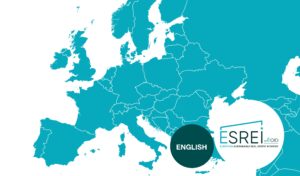Since January 10, 2024, the provisions of European Regulation (EU) 2023/606, commonly known as ELTIF 2 (for European Long-Term Investment Fund), entered in force, marking an important milestone for players in the real estate sector. This regulation aims to introduce a new form of cross-border long-term investment vehicle, designed to support the real economy and accompany ecological and digital transitions. What are the implications of this development for real estate funds?
What is the ELTIF Regulation?
The ELTIF Regulation, dedicated to European Long-Term Investment Funds, aims to channel financial capital towards real assets, such as Small and Medium Enterprise financing or tangible assets, including real estate. It responds to the need to redirect non-bank capital towards long-term projects, thereby contributing directly to the real economy. ELTIFs are the only type of fund dedicated to long-term investments that can be distributed to both professional and retail investors in all European countries.
ELTIF funds are alternative investment funds (AIFs) specializing in long-term investments. They are the result of the first ELTIF regulation, ELTIF 1, launched in 2015. However, the associated rules proved too restrictive, and the objectives in terms of the number of funds created were not met. In fact, only 57 ELTIFs were created for a total of €2.4 billion in 4 countries alone, including 14 funds approved in France, mostly in the Specialized Professional Funds (SPF) format.
In response to these challenges, the ELTIF 2 Regulation was published in the Official Journal of the European Union on March 20, 2023, and has been in force since January 10, 2024. It introduces more extensive marketing rules for retail investors and more flexible investment rules.
This new version of the Regulation aims to achieve two main objectives:
- Contribution to the digital transition: inclusion of FinTechs among the authorised assets,
- Contribution to the European Green Pact: inclusion of green bonds.
What assets are eligible?
Most tangible assets are eligible, with the exception of those that do not contribute to financing the real economy, such as works of art, manuscripts, wine stocks and jewellery. As far as real estate is concerned, the following assets are eligible:
- Social infrastructure » (retirement homes and hospitals),
- Educational, health and social assistance infrastructure »,
- Commercial property investments,
- Assets dedicated to education and research,
- Assets qualifying as « sources of economic or social benefit », including residential.
What simplifications have been made to the framework?
The ELTIF 2 Regulation broadens the definition of eligible assets to include certain securitised assets. It also offers greater flexibility in terms of minimum size criteria for tangible assets and maximum size criteria for listed assets. The new rules also allow investment in international assets, going beyond the limits of European assets alone.
What are the implications for real estate funds?
The entry into force of the ELTIF 2 Regulation opens up new opportunities for property funds, particularly OPCIs in France. Compliant real estate funds can benefit from extended marketing rules, facilitating cross-border investments and encouraging more flexible portfolio management. The ELTIF 2 Regulation encourages sustainable investment, particularly in digital transition and green initiatives. In summary, the ELTIF 2 Regulation offers real estate funds the opportunity to align themselves with sustainable objectives, explore new investment horizons and enhance their flexibility while maintaining regulatory compliance.
What is the link with the SFDR Regulation?
ELTIFs remain subject to the obligations of Regulation (EU) 2019/2088 on sustainability disclosure. Where ELTIFs promote environmental or social features or aim for sustainable investment, they must comply with the disclosure requirements set out in Articles 8 or 9 of Regulation (EU) 2019/2088. These articles contain detailed transparency requirements for published pre-contractual information.
Link to the official text: Regulation (UE) 2023/606
The Green Building Observatory (OID) has launched a European programme in 2021, the European Sustainable Real Estate Initiative (ESREI), that brings together real estate stakeholders to discuss ESG issues and the situation regarding ESG regulations across Europe.
ESREI is now sponsored by Advenis REIM, AEW, Amundi Asset Management, Axa Investment Managers, BNP Paribas Real Estate, CBRE Global Investors, Ivanhoe Cambridge, La Française REIM, Mazars, Ofi Invest and Pimco Prime Real Estate. Contact the ESREI team at esrei@o-immobilierdurable.fr if you are interested to join us!



